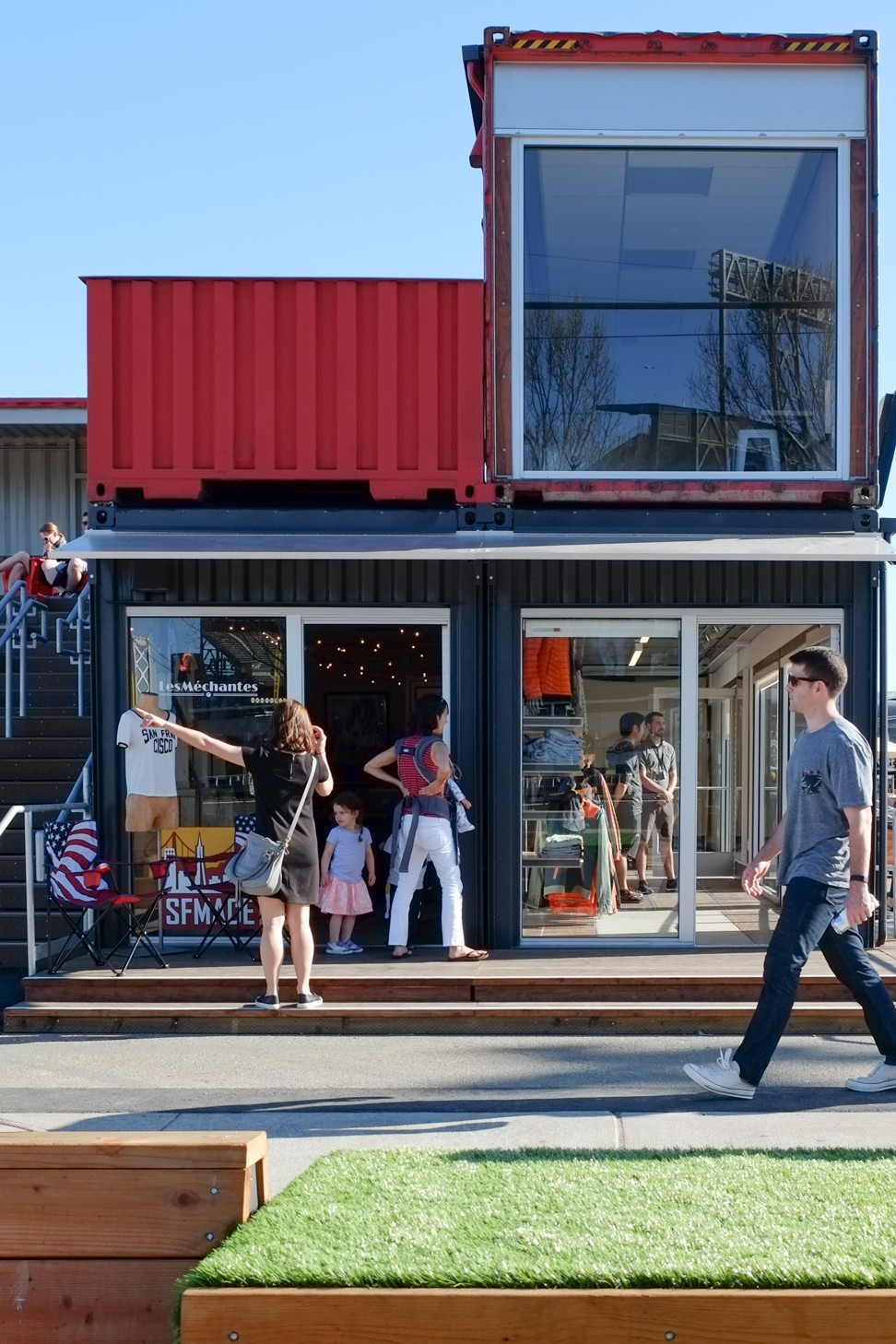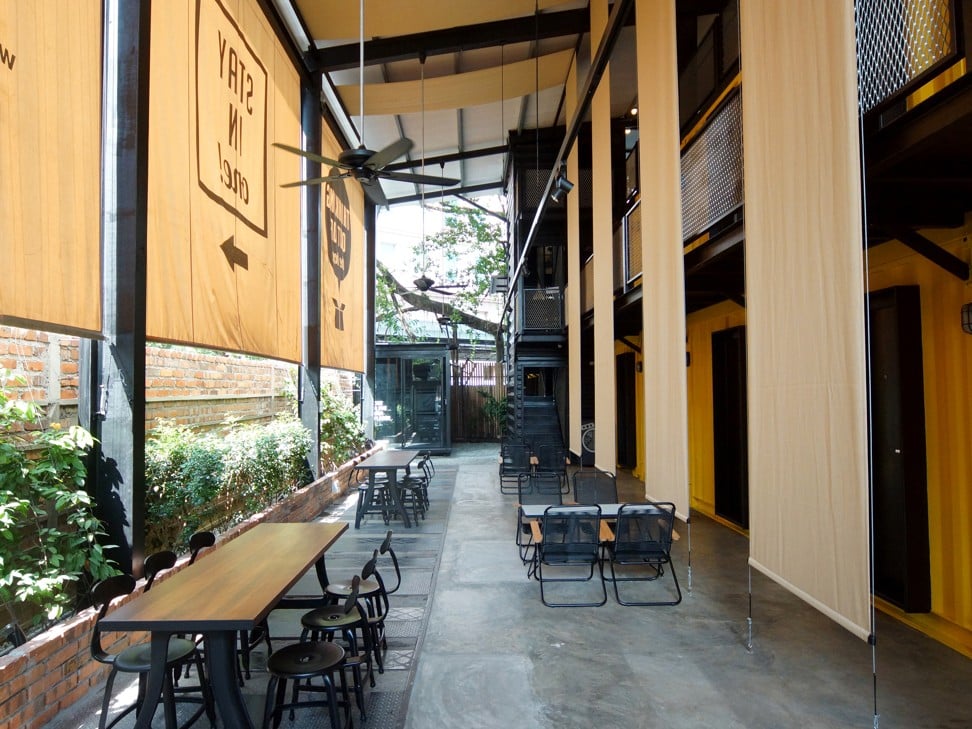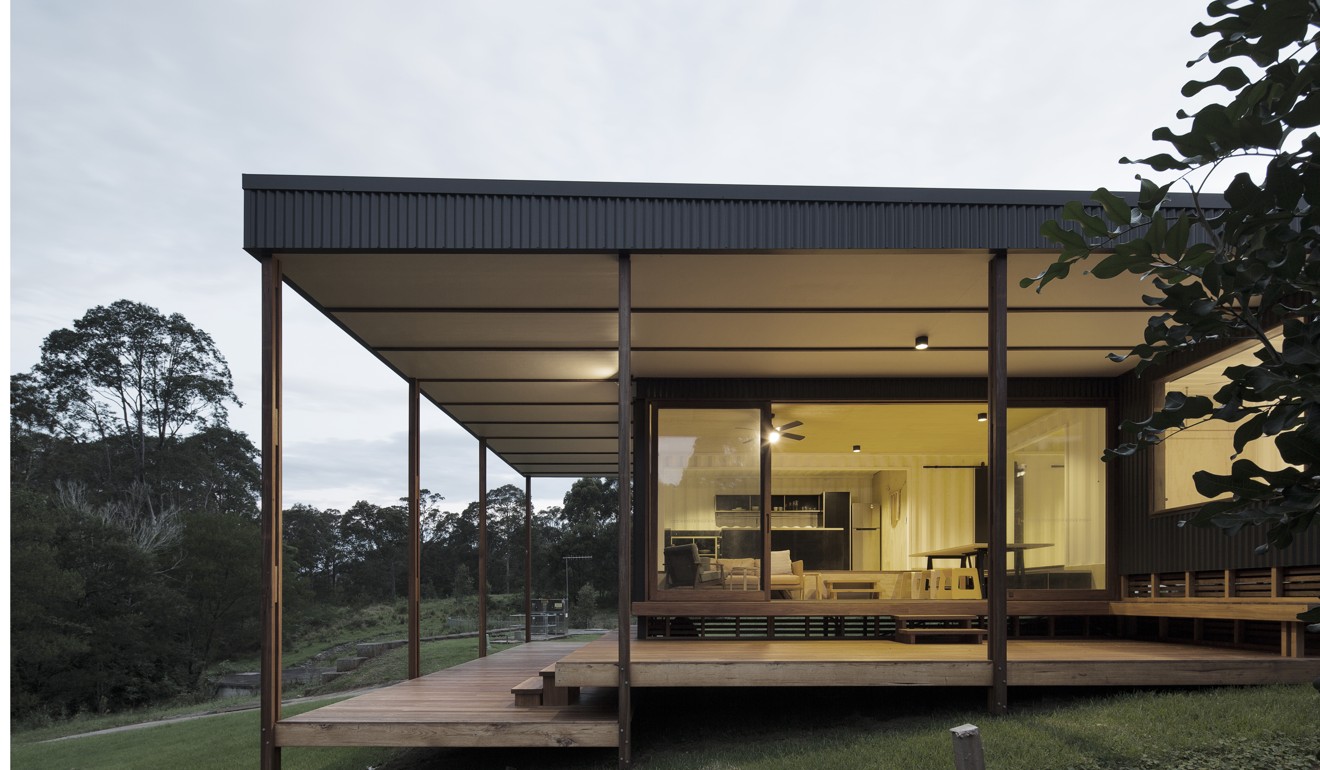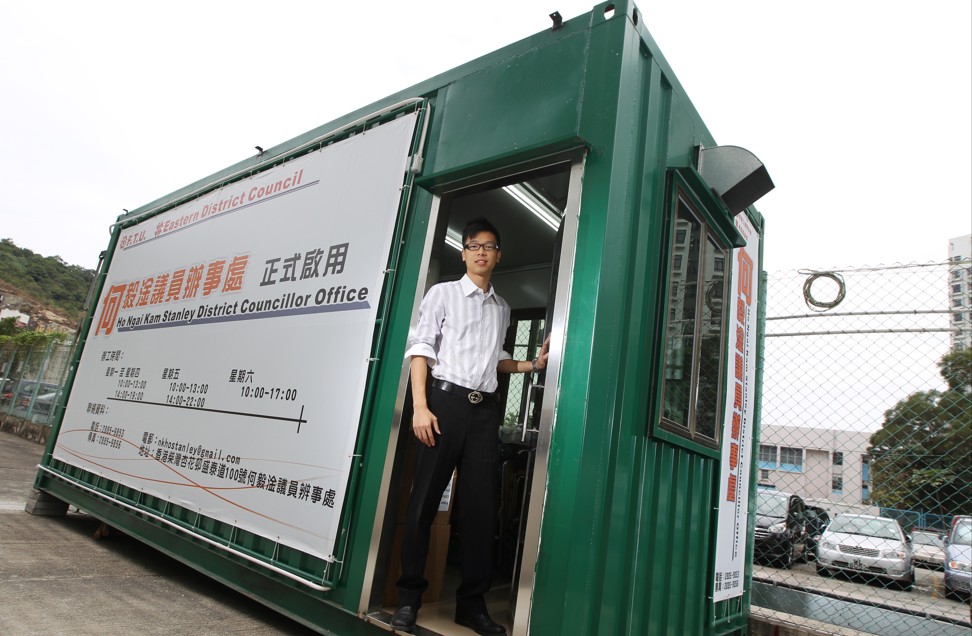
Plans for container homes in Hong Kong get a mixed reaction from experts
With developers pushing to build cargo container accommodation, architects can’t agree on whether they are an unreliable, risky option or an affordable, ready-made solution to the housing problem
They’ve been used as trendy “tiny homes”, student accommodation and extravagant luxury houses. A whole shopping mall has been crafted from them, plus many a pop-up restaurant. Now the humble shipping container is being used for swimming pools.
They may be versatile, but whether a metal box is a viable mass housing solution for Hong Kong, as has been mooted, is a matter of conjecture. What do architects with experience of them think?
Thinking inside the box: Hong Kong container homes could be on the way
American architect Mark Hogan, of OpenScopeStudio in San Francisco, is firmly in the “no” camp.
A proposal to build a shipping container skyscraper to provide temporary housing in a slum in Mumbai, India – which won GA Design Consultants an international ideas competition in 2015 – sparked a Twitter rant from Hogan about the unsuitability of containers for habitation. Two years on, his views haven’t changed.

He is not opposed to prefabrication in general, and has done a container project himself – a social gathering place and temporary storefront between the SoMa and Mission Bay neighbourhoods of San Francisco, opened in 2015 – but is yet to see examples of containers being significantly better or cheaper than standard construction for permanent housing. Besides, Hogan adds, they don’t make economic sense for Hong Kong.
“Shipping containers cannot be stacked to high-rise height without an added secondary structural frame,” he says. “In Hong Kong, stacked containers would be limited to about nine storeys, which means a short building put on some of the world’s most expensive land. I’d much rather see the capacity of those sites maximised with true high-rises in concrete, steel or cross-laminated timber.”
A Hong Kong home for US$15,000? It’s not a pipe dream any more with this novel solution to low-cost housing shortage
Others who have worked with containers as a construction material take a different view.
As CEO of Urbantainer, the South Korean designer of Common Ground – a Seoul shopping centre complex built with 200 of the structures – architect Jiwon Baik believes Hong Kong could be one of the world’s best testing grounds for container residences.
Instead of being a cheap housing solution for developing countries, Baik sees a role for container architecture in building greener cities. He estimates 60 per cent less carbon dioxide is emitted by container manufacturing than reinforced concrete construction, and with the largest container producing country in the world – China – on its doorstep, Hong Kong gains a significant logistical advantage.
In Hong Kong, stacked containers would be limited to about nine storeys, which means a short building put on some of the world’s most expensive land
“This modular/pre-fab construction method can be particularly successful in areas of high density where land is expensive,” Baik says.
Urbantainer has been conducting research and development on container modular architecture for residential and commercial buildings, and has three patents registered in South Korea and the US. The stacked containers would be reinforced to withstand storms and even typhoons, Baik says. As for issues such as insulation and waterproofing, he believes they can be resolved.
“We’ve had engineering teams working on this and the results are positive so far. We believe we can solve this problem with consistent research and development.”
Wong Wei Ping, co-founder of design firm Tetawowe Atelier in Malaysia, used seven shipping containers (5 x 40ft; 2 x 20ft) as part of a 23-room hotel in Kuala Lumpur that was finished in 2016. It was originally built two years earlier as premises for the client’s start-up business.

He sees advantages in containers for mass housing, due to their affordability, light weight, stackability, and fast and easy construction methods. As these boxes come ready-made, the superstructure construction time is minimised, resulting in cost savings.
“Prefabricated toilet facilities, cabinetry, plumbing and air cooling systems can be manufactured in factories and assembled on site of the shipping container project,” Wong says.
Apart from living quarters, urban garden beds, swimming pools, co-working spaces and more could be incorporated as a modular system to create a shared living environment. Container homes can also be placed on underused sites such as government land (a traffic island or below a flyover), on top of an office building or multi-storey car park, he says.

Mads Moller, founding partner of Arcgency in Copenhagen, agrees. The Danish architect has created a sustainable container home in China (the WFH House in Wuxi, completed in 2012) as well as student housing and offices for start-up businesses in Scandinavia.
The Wuxi house, designed to be carbon-neutral, comprises three upcycled shipping containers within a sustainable bamboo facade, with a solar-cell-clad green roof, rainwater collection system, permeable paving and optimal orientation. Its flexible structure can be adapted to sites worldwide, including earthquake-prone areas.
“We believe that the strategy for temporary, sustainable typologies can be a new way to not only solve problems, but to develop cities,” Moller says.
Shipping containers, as one such strategy, allow “action here and now, with solutions that are reversible and/or may drive new, innovative and more permanent solutions”. He thinks the most demanding task would be to find a spot to place the container homes “and avoid it becoming a ghetto”.
Creator of futuristic liquid meal replacement could face charges for his abandoned shipping container home
Australian architect Matt Elkan notes that buying the containers is just one, relatively small, component of a budget for this style of building. “Substantial modifications to containers cost money, which undermines their economic efficiency,” Elkan says.
He cites a recent project on the south coast of New South Wales where four nearly new containers cost about A$20,000 (US$15,200) in total to buy, plus another A$20,000 in total for initial modifications and delivery to the site.
“However, the project ended up costing over A$300,000 once the containers were further modified, enclosed, and fitted out,” Elkan says. “At the level of mass housing, I imagine containers would need to remain as ‘unmodified’ as possible in order to realise the potential economic benefits.”

Having containers as mobile service pods for homes, however, could be a way of using them on a large scale, Elkan believes.
“If a site could provide enclosed, but largely unserviced living spaces that had capacity for containers full of bathrooms, kitchens, laundries, to ‘plug in’, then there could be some big gains. That way the containers could potentially do what they are good at [being regular sized; enclosed], while also allowing more habitable and pleasant space for people.”
Hong Kong’s old office buildings and warehouses offer potential for this kind of side-by-side living arrangement, although some modifications, for example, removing walls, may be required to move them in.
Hong Kong Eastern District councillor Stanley Ho Ngai-kam has his own exclusive insight. High rents forced him set up office in a shipping container in 2013. Four years on, he is still there.
“It’s OK,” Ho says from his roadside day camp in Heng Fa Chuen.
Cheap Hong Kong-designed ‘container homes’ the way of the future
The container has no toilet and no running water, but timber lining and an air conditioner have at least taken the sting out of summer heat. If plumbing and other infrastructure necessary for habitation were installed, Ho doesn’t see why containers couldn’t be used as a temporary living solution for Hong Kong.
But with the Council of Social Service in talks with developers to build customised container homes that could be rented cheaply by families in need, and the government preparing a trial of prefabricated homes primarily intended to accommodate students, architect James Law takes a broader view.
According to Law, of James Law Cybertecture, container home living is “one of several possible interventions” that could help the housing situation in Hong Kong – and not only for people on public-housing waiting lists.

He suggests that this type of architecture may be suitable even for middle-class housing, “so that we have something more flexible for the city”.
“Of course, right now, why people are talking about container homes and modular homes is [because] we need a fast and cheap solution that could bring housing availability to the homeless and lower affordability classes,” Law says.
“However, Hong Kong is an increasingly dense urban environment with a lot of ageing buildings that will need to be demolished in order for the city to build capacity.
A home above a container terminal? Hong Kong public consultation to start on land supply options
“So my long-term vision as an architect is that [container homes may be suitable] even for middle-class housing. If we can build them in such a way that they are modular, there is greater potential for them to be adapted, moved, added to and changed, so as to be in line with the needs of a city becoming more and more populated, and as different districts change their identities due to changing economics.”

